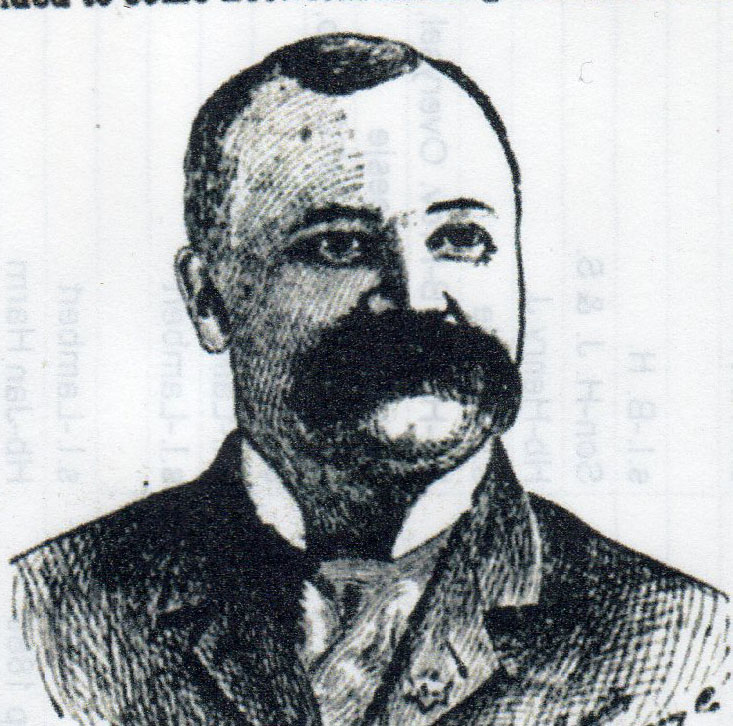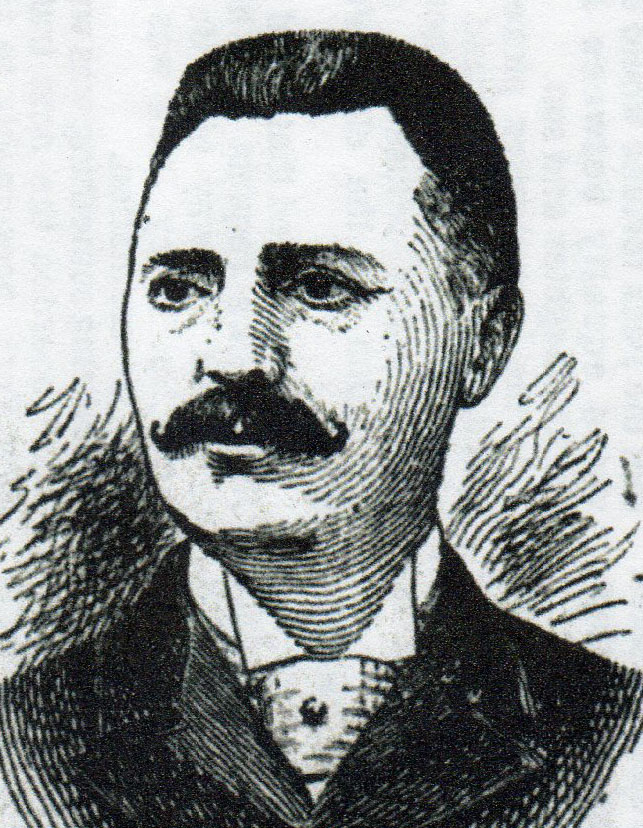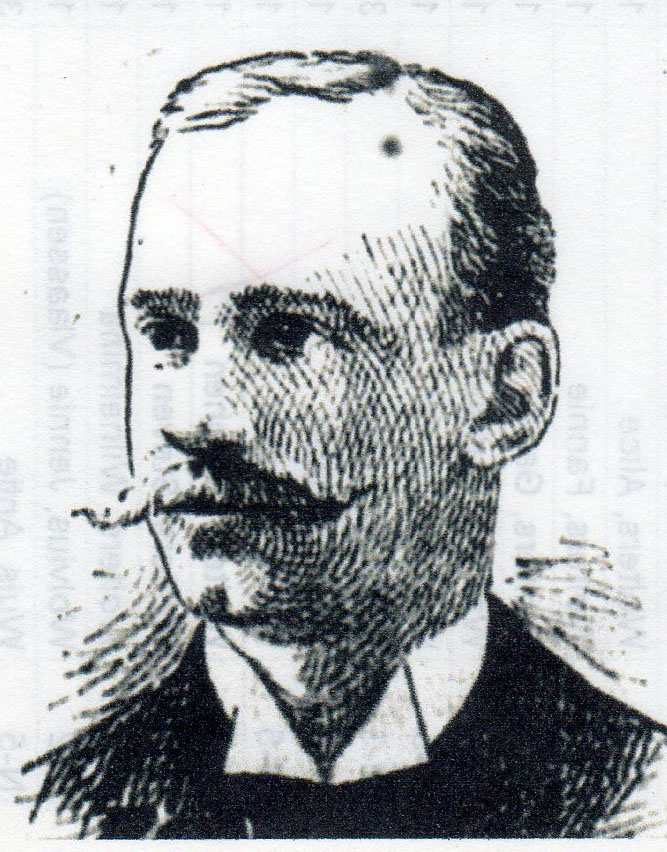





Hon. At. S. White, H. D. C. Van Asmus W. H. Loomis
Knights of Pythias
Thousands of Knights of Pythias
Throng the Valley City
To take part in the ceremonies attending the laying of the
Pythian Temple Corner-Stone
Eloquent Addresses
|
Imposing ceremonies marked the placing of the corner tablet on the Pythian temple this afternoon. It was a great day for Pythians and well may they feel proud that such a significant temple is being reared to the youngest purely fraternal order in existence whose cardinal principles are friendship, charity and benevolence. Born thirty-two years ago in the city of Washington, the order has made a record unparalleled in history. Builded upon the trinity of friendship, charity and benevolence, a splendid organization stands and under the tricolored standard the order of Knights of Pythias has made wonder ful progress. In it men are bound together by the strong tie of sincere fellowship. Its tendencies are to annihilate those annoying and vexatious strife which set man at enmity with his neighbor and to break down prejudice, whether political or religious. It was upon those grand principles, which befit it for the noble work of promoting the era of good will and good fellowship among men, that the order of Knights of Pythias was founded by Justus H. Rathbone, February 18, 1864. At the time "when war was in the heart of man and sorrow in his home" - when from ocean to ocean and from lakes to gulf, our glorious land was engaged in scenes of carnage and death - Mr. Rathbone saw in Grecian history the germ of an order that should prove a power in dispelling the warmth of sectional strife and restoring the hearts of men to a basis of universal brotherhood. The story is founded upon the friendship of Damon and Pythias. Dionysius, the tyrant, had condemned Damon, a senator of Syracuse, to die. That Damon night see his wife and children once more before death closed his eyes forever, Pythias became a hostage for his friend. Damon was soon at home; he bade his dear ones a tender and affectionate farewell and called for his horse, in order to return in time to redeem his pledge to Pythias. He finds that his horse has been killed by his slaves in order to prevent his return, but he secures another horse and flies to Syracuse. In the meantime Pythias insists upon the terms of the hostage being carried out to the letter. He is led forth to seal his friendship with his blood. Does he shrink? No. Does he falter? No. With soldierly courage and iron nerve he wends his way, cheerfully to die for his friend, saying, "It is sweet to die for those we love." In that awful moment the clatter of a horse's hoofs is heard in the distance, and soon Damon falls exhausted at the feet of his friend. This display of manhood and true courage led captive the tyrant's heart, who, remitting the death sentence of Damon, sought admission to their friendship. Such in brief is the history of the friendship to which the temple today is erected as a monument. There are five lodges in Grand Rapids, numbering over 500 Knights and a uniformed rank, strong and well drilled. Four of the five lodges and the uniformed rank will find a home in this new and magnificent temple. They are Eureka No. 2, the mother of them all, Cowan No. 89, Lily No. 110, and Valley City No. 124. The baby of them all, Imperial No. 154, has a cozy home on Wealthy avenue, and probably will continue to meet there. The idea of a Pythian temple was discussed for some time, and February 4, 1893, the first meeting was held in the office of H. D. C. Van Asmus. It was decided unanimously to ercet the building. The site was purchased from Mrs. J. Boyd Pantlind, and in just a year the seven-story building has reached its fourth story. The first president of the building association was General H. F. Hastings, and upon his death Hon. A. S. White took his place. The other officers ar Secretary H. D. C. Van Asmus and Treasurer A. B. Knowlson. The three officers with James Bayne and John "WAddell comprise the board of managers. The stockholders and managers are: W. J. Berry, A. W. Rush, M. P. Thiele, Ed Owen, F. L. Hoag, W. J. Hayden, T. B. Perkins, A. Almquist, C. N. Remington, Jr., W. A. Doriand, M. D. Vandenberg, Cecil Hastings, I. E. Lamoreaux, E. C. Tawingt, Charles A. Rauser, M. B. Church, J. M. Murray, W. C. Horner, D. S. Sinclair, L. M. Knappen, A. Ebermeyer, J. M. Jamison, Harriett C. Hastings, Mrs. H. D. C. Van Asmus A. W. Rush & Son drew the plans, a description of which has been given in those columns heretofore. The general plan is for a seven-story, brick and stone building, as shown in the accompanying cut. The basement and five first stories are to be devoted to furniture show rooms, the sixth for offices and the seventh for lodge purposes. March of the Knights The parade formed according to programs on Turner street, with the right resting on West Bridge street. Promptly at 3:00 Wurzburg's band struck up a stirring piece of music and Day Marshal Charles E. Belknap set the column of plumed Knights, grand officers and lodges, in motion. He was followed by his mounted aides, W. P. Walsh, Charles Phillips, E. F. Stace and H. G. DeWar. Following the band came the regimental officers, mounted. |
Transcriber: ES
Created: 2 Jan 2011